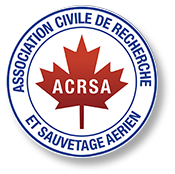To the letter
Watch for Heli-seismic Activity
Dear Editor,
Following a recent conversation with and suggestion by Mr. Moe Baile, System Safety, Prairie and Northern Region, we wish to make you aware of an aviation safety issue that has arisen from some near misses that have happened to our company and its contractors in the past two summers. We also wish to have you consider whether these incidents might be appropriate for publication to make the aviation community aware of the safety issue.
Background Information
Throughout western Alberta and eastern British Columbia, especially during the summer season, a petroleum industry activity known as helicopter-assisted seismic activity, or heli-seismic activity for short, is conducted. Generally, this activity involves one or several light to medium helicopters that conduct multiple low-level missions (below 500 ft. above ground level (AGL)) from dawn until dusk within a defined geographical area.
The helicopter missions involve a variety of tasks, including the transport of crews and equipment, reconnaissance and scouting, and the slinging of portable drills and other equipment. Helicopters have proven to be an indispensable tool for this activity. Risk management is a vital part of engaging in this activity safely. Rugged terrain, mountain weather conditions, and operations at high density altitudes provide a variety of safety challenges for the crews.
Recent Near Misses
Almost all of the activity described above is conducted under visual flight rules within Class G (uncontrolled) airspace. In the past two summer seasons of operation, there have been near mid-air collisions between one of the helicopters working for us and other aircraft transiting our areas of operation.
In August 1996, a Douglas DC-6B conducting a simulated forest-fire-suppression mission passed uncomfortably close to an AStar B-2 helicopter working within one of our heli-seismic jobsites. Our internal near-miss investigation made the following findings:
- The local forestry agency that dispatched the aircraft to our area had been advised of our presence as part of our risk-management program.
- The forestry dispatcher had neglected to inform the water-bomber crew of our helicopter's presence in their practice drop zone.
- Simulated fire-suppression missions are randomly conducted with the prior knowledge of industry or members of the public who may be present in the intended mission area.
In August 1997, two British Armed Forces helicopters flew at a low level (below 500 ft. AGL) through our area of heli-seismic activity and caused the AStar B-2 seismic pilot to take evasive action to avoid an anticipated mid-air collision. Within a couple of days of this incident, the Canadian Forces Snowbirds demo team had flown through one of our seismic jobsites at a low level (altitude unknown) while "warming up" just prior to commencing an air show at an airport about 40 NM from our jobsite. Crews on the ground warned the helicopter pilots of their presence and no conflict occurred. There might have been the potential for a conflict had the ground crews not warned the nearby pilots. Our internal near-miss investigation made the following findings:
- A written notice of our presence (including a map of the jobsite location) had been faxed by me to the local forestry agencies and to a nearby NAV CANADA flight service station prior to the start of the job.
- A request by me for the issuance of a Class I NOTAM regarding this jobsite and the associated helicopter activity just outside a nearby Class D control zone had been denied by NAV CANADA. This activity had been deemed not to meet the criteria for the issuance of a Class I NOTAM.
- The British Armed Forces helicopters had no way of knowing of our helicopter's presence at a low level in the same area as their low-level training mission.
- The British Armed Forces and Canadian Forces conduct low-level flights in Class G airspace without the prior knowledge of industry or members of the public who may be present in the area of their missions. However, we do acknowledge that specific potentially dangerous military activities are confined to Class G restricted airspace.
Safety Awareness Issues
If our experiences of near mid-air collisions during low-level heli-seismic missions are typical, then many of the similar mission-specific activities, such as heli-logging, aerial surveying, remote sensing, pipeline patrol and air ambulance, must be experiencing similar incidents.
It seems that, because of the number of aircraft, the variety of missions and the resultant demands upon the flight crews, and the fluid nature of the geographical areas involved, there is no simple panacea for reducing the risk of mid-air collisions in Class G airspace.
The potential for mid-air collisions during low-level missions will probably increase in the future as new applications from new technology are found for aircraft.
Conclusion
We strongly urge Transport Canada to use all means available to raise the awareness of the Canadian aviation community (civil and military) about the increasing potential for mid-air collisions during low-level missions conducted in uncontrolled airspace.
We intend to make other aviation-industry agencies and associations aware of these issues to generate discussion and explore possible ways to mitigate some of the risks of mid-air collisions in uncontrolled airspace.
Thank you for your attention. I would be happy to communicate with you at any time regarding this letter.
W.K. (Bill) Gillespie
Chief Pilot
Shell Canada Limited
Originally Published: Aviation Safety Letter 02/1998
Original Article: To the letter - Watch for Heli-seismic Activity









